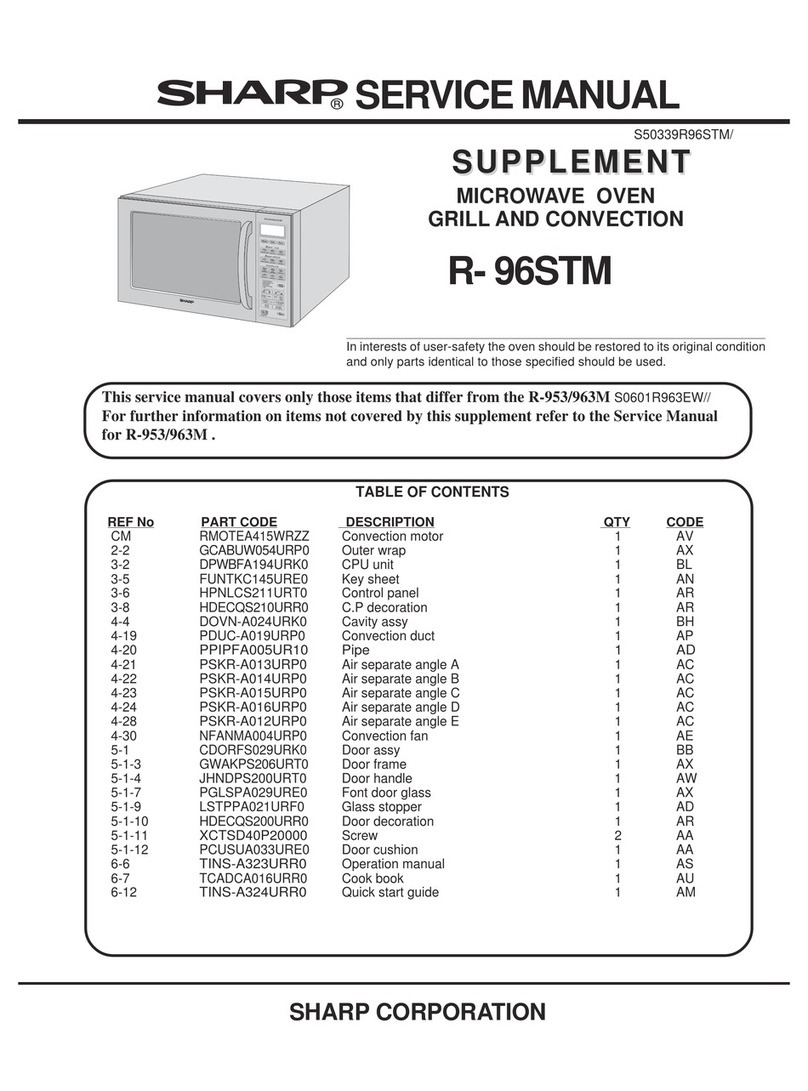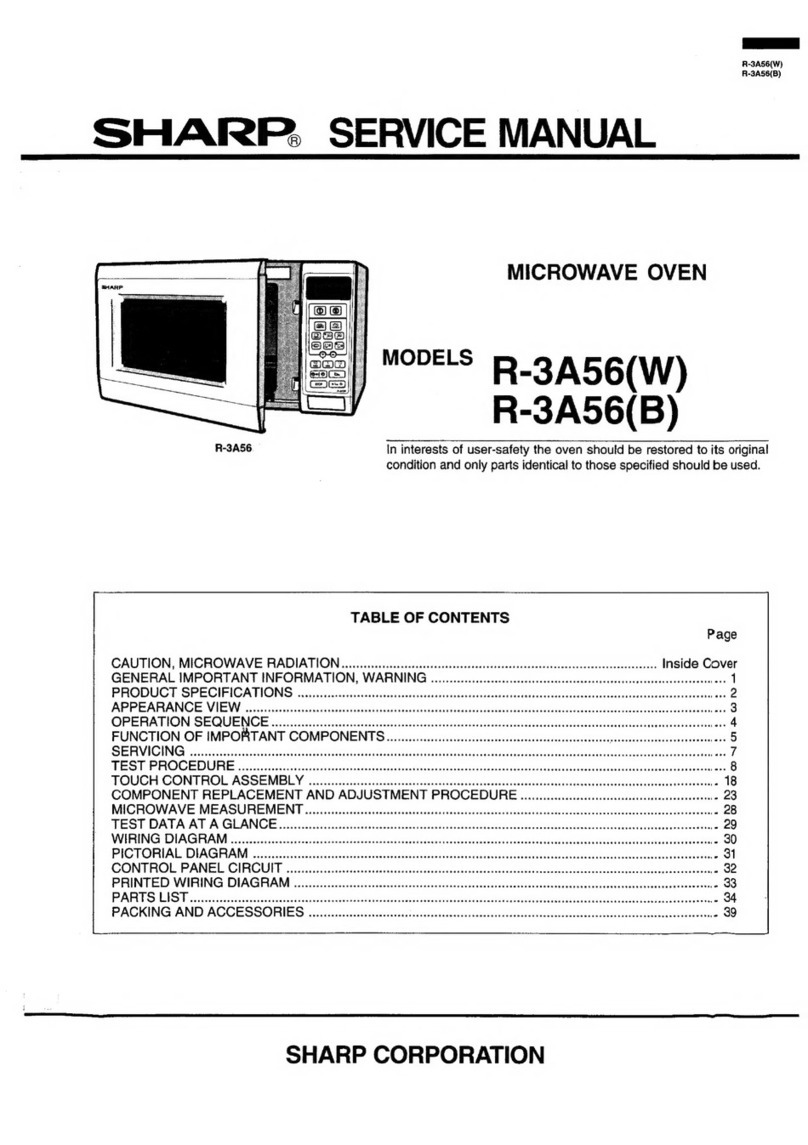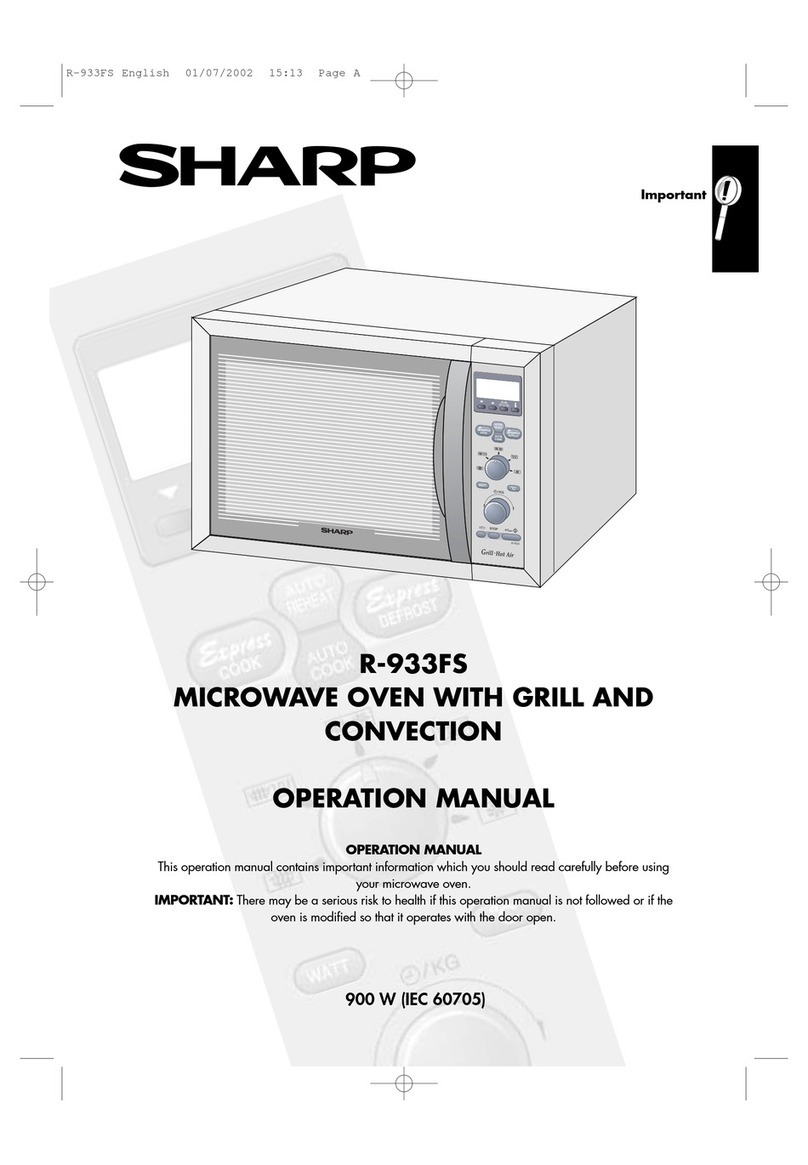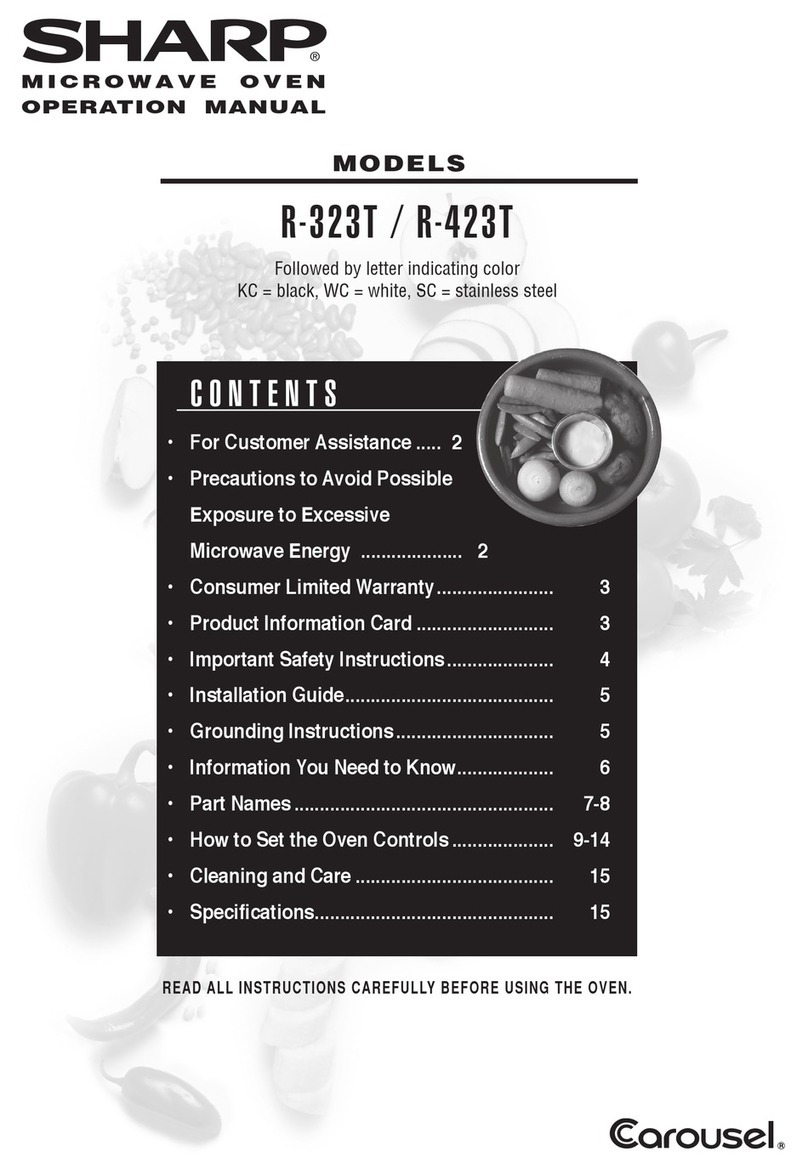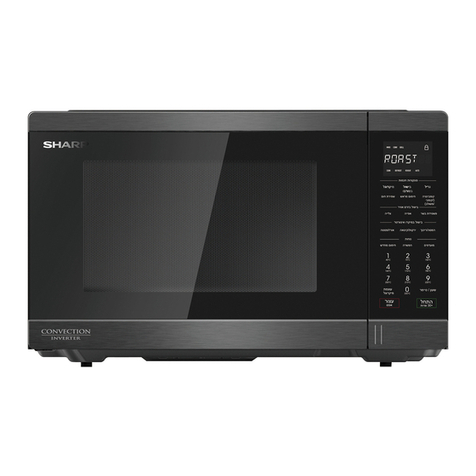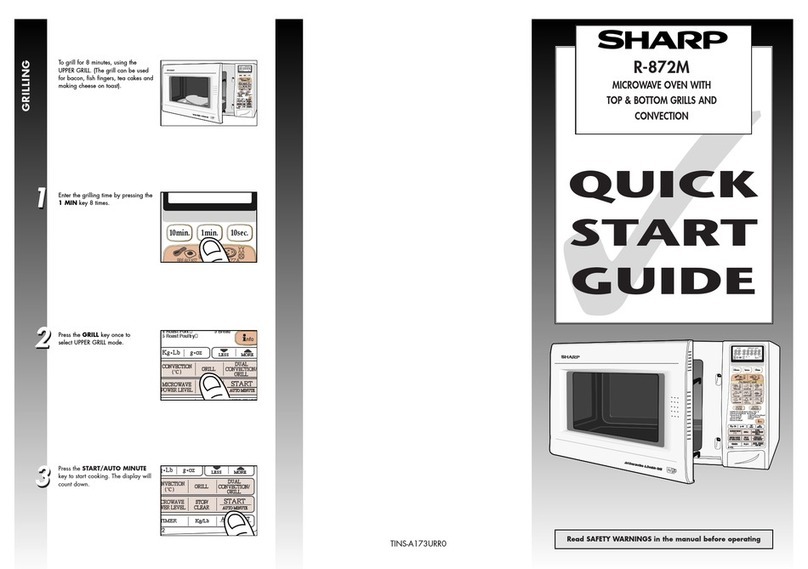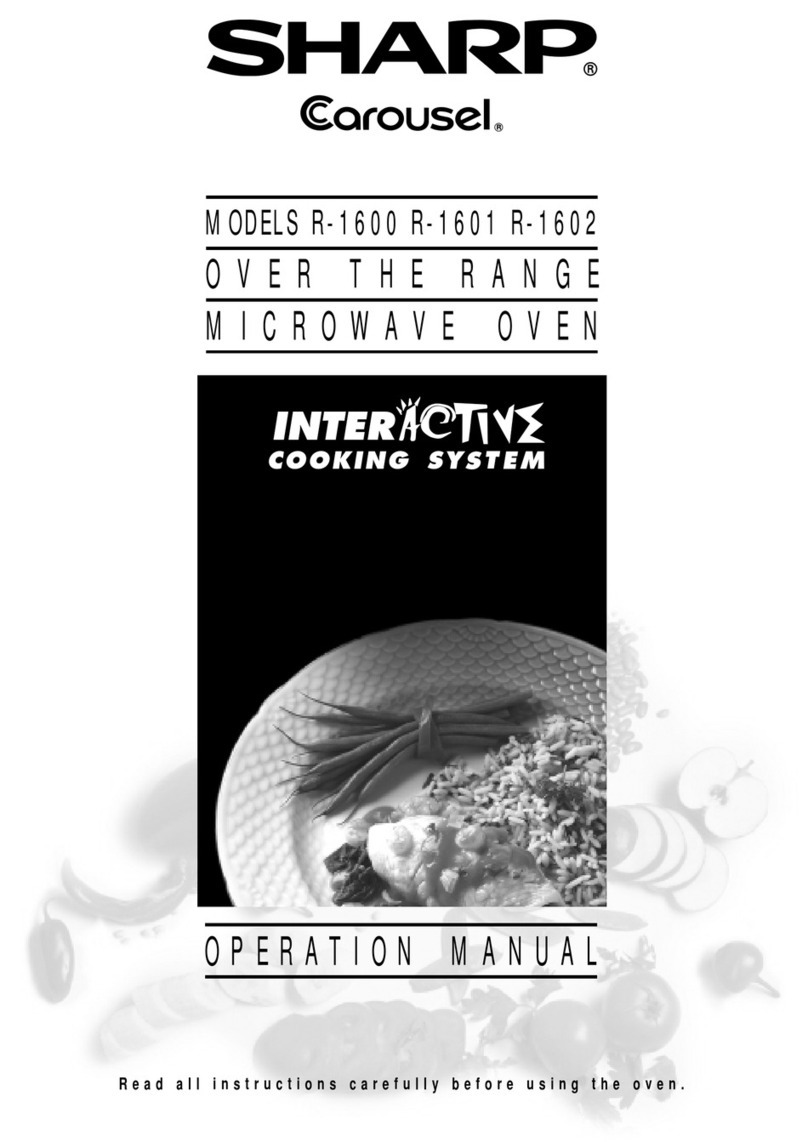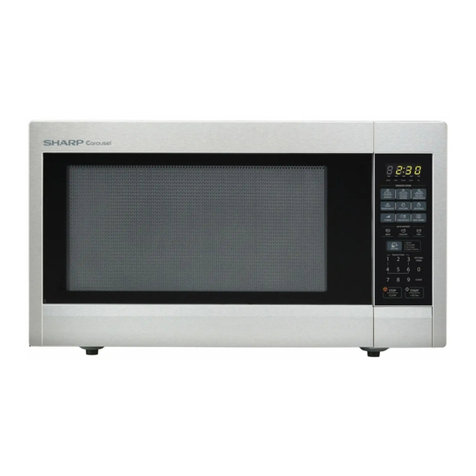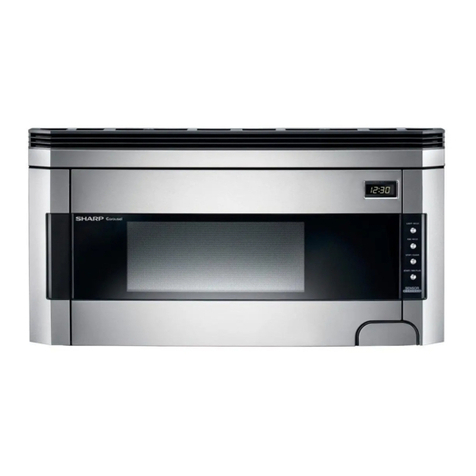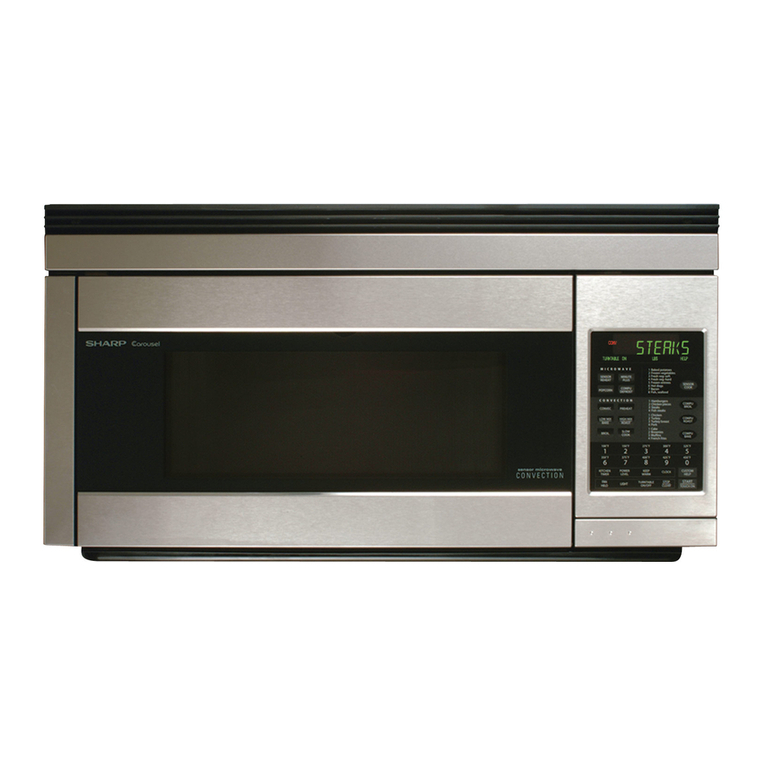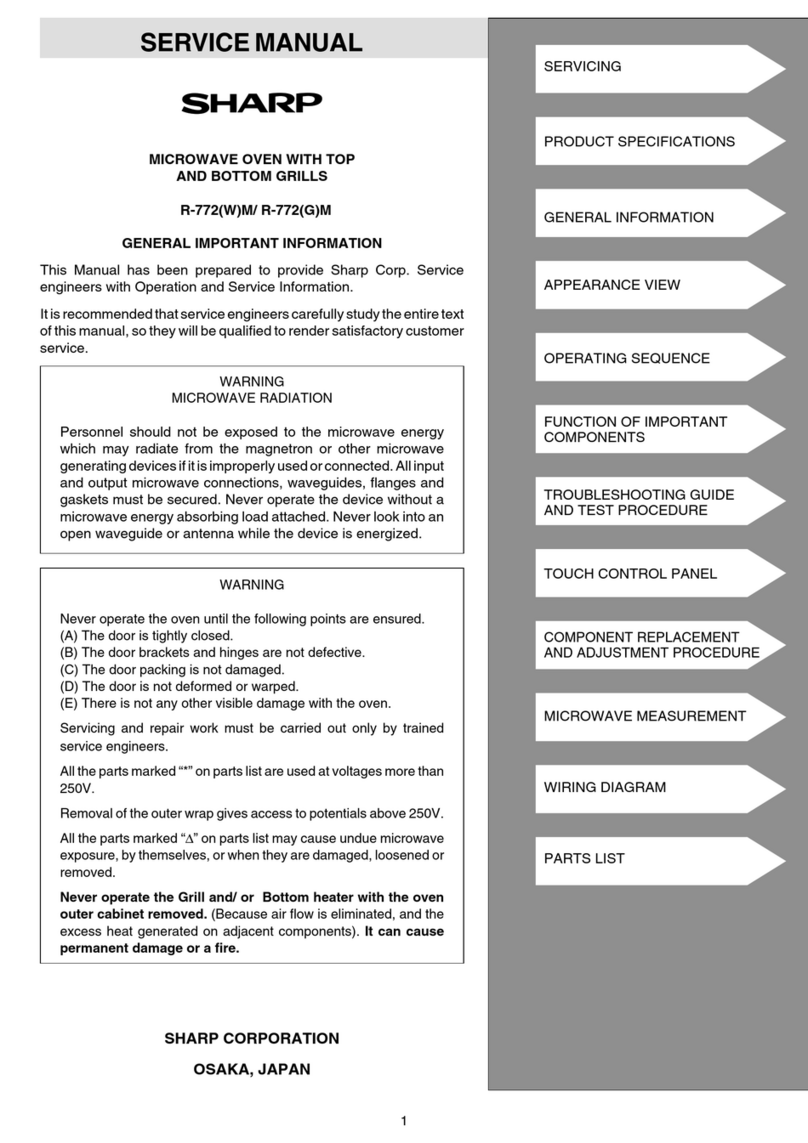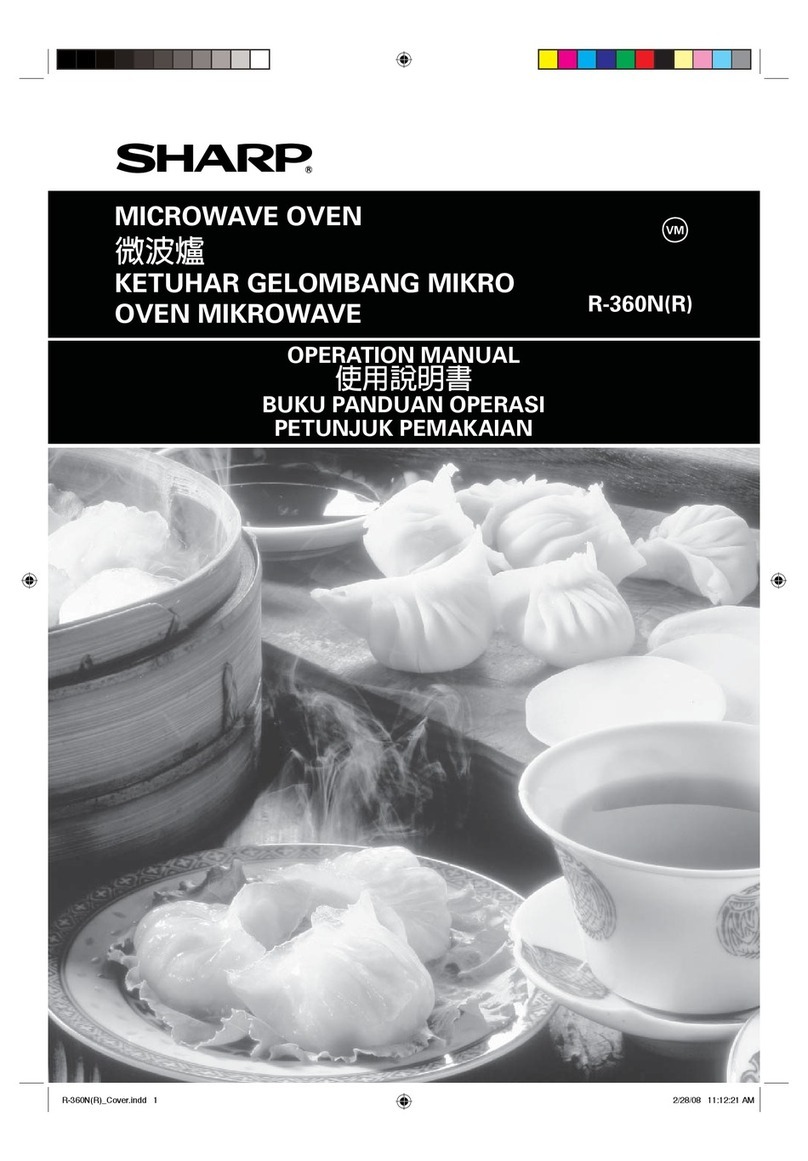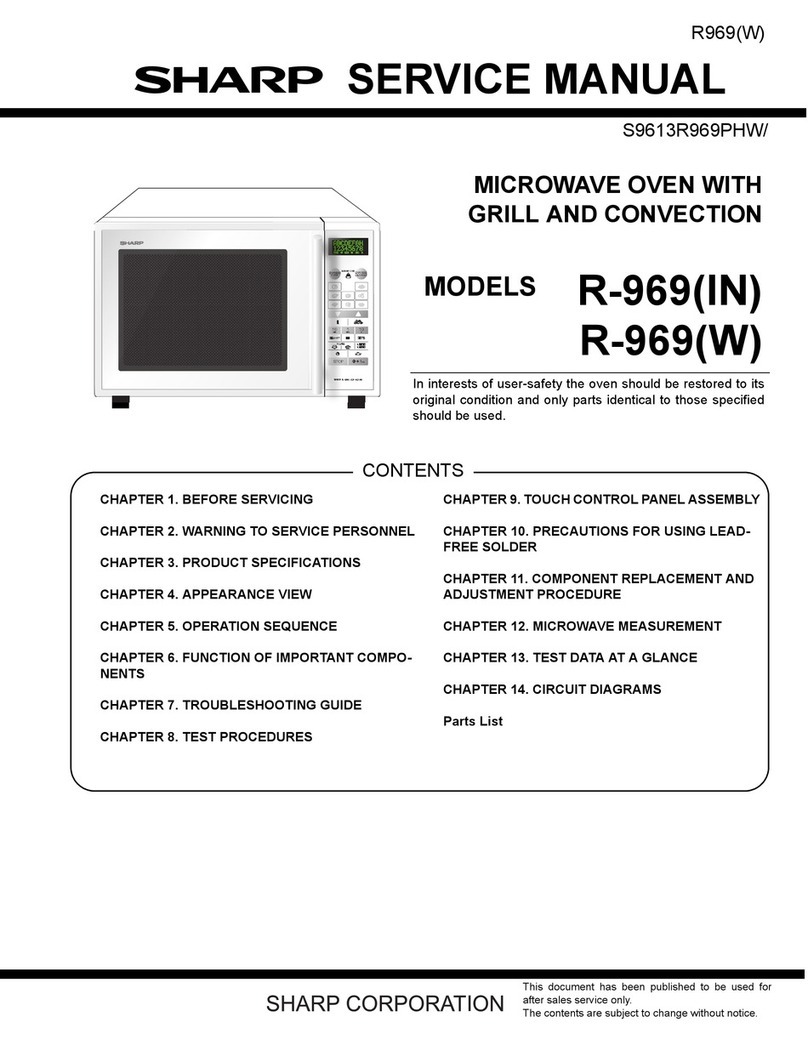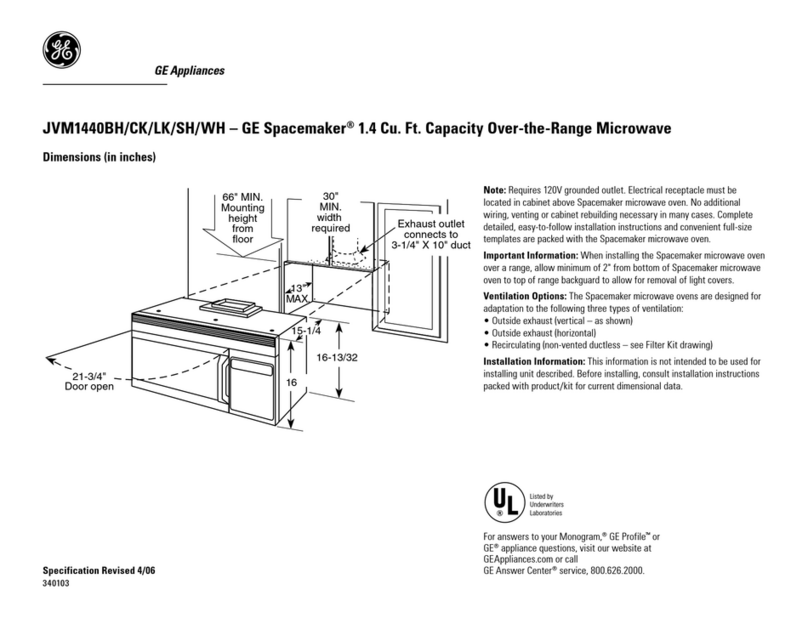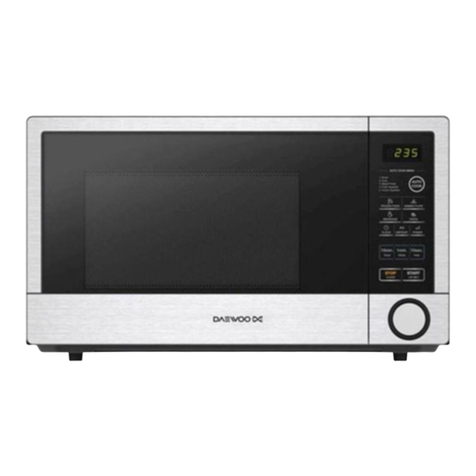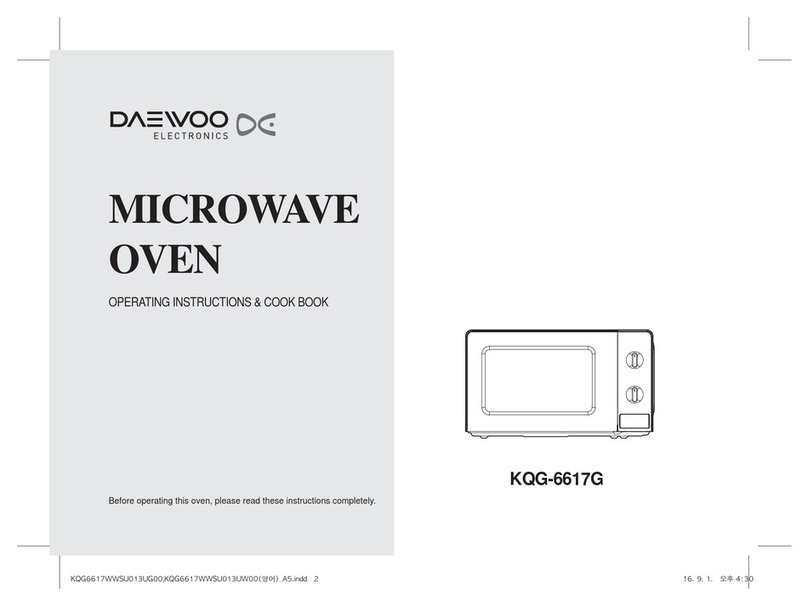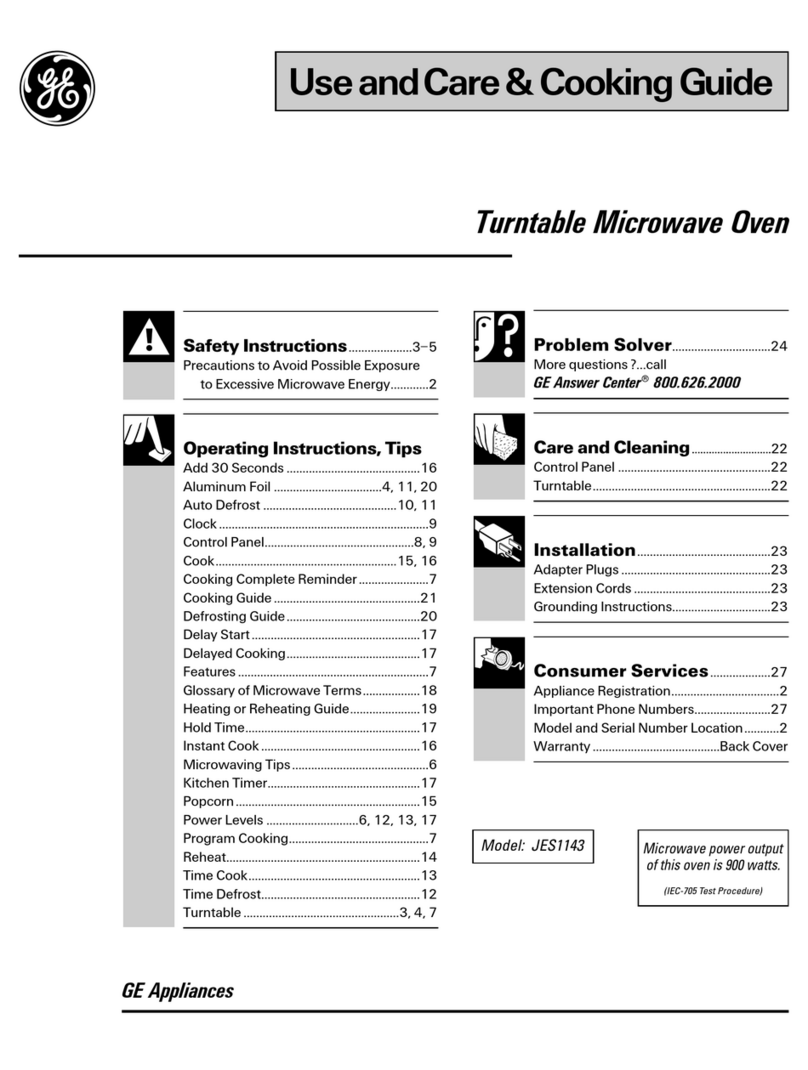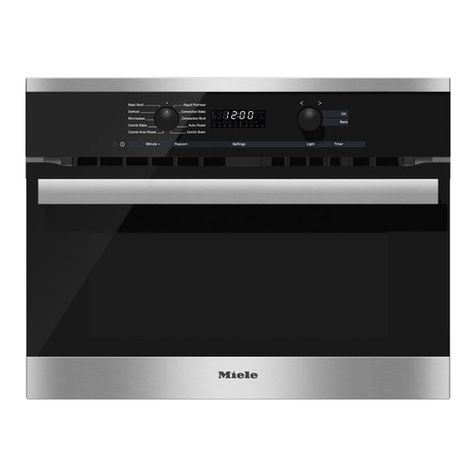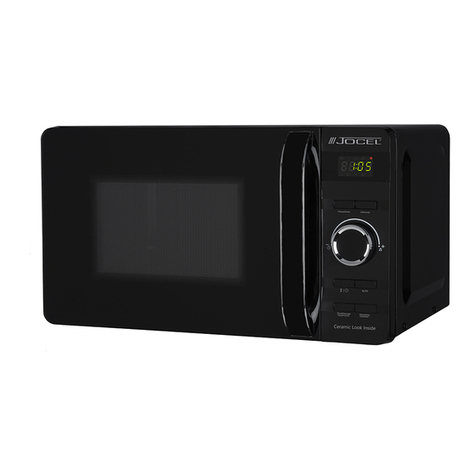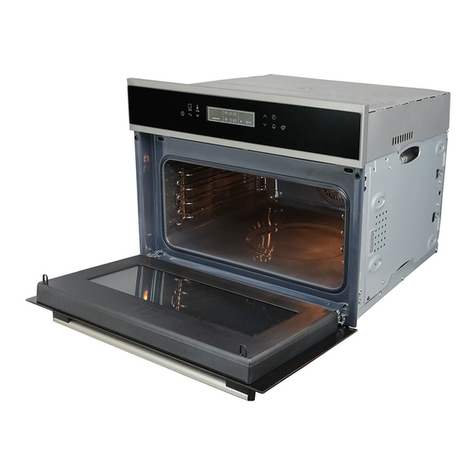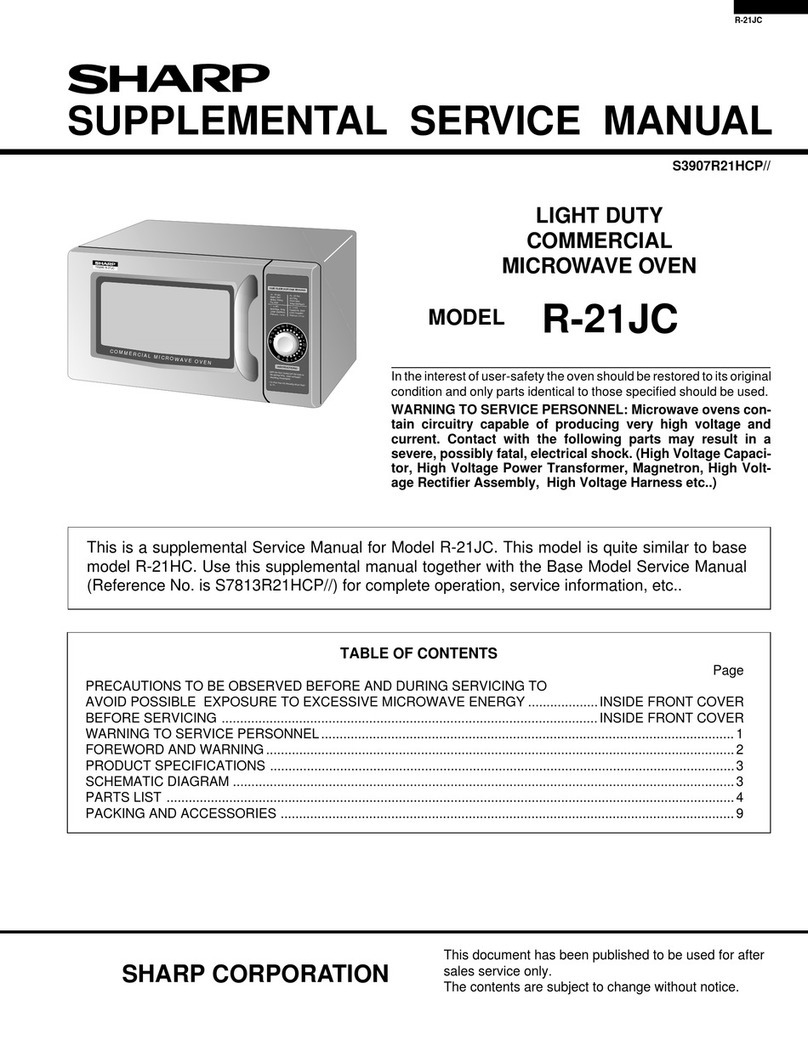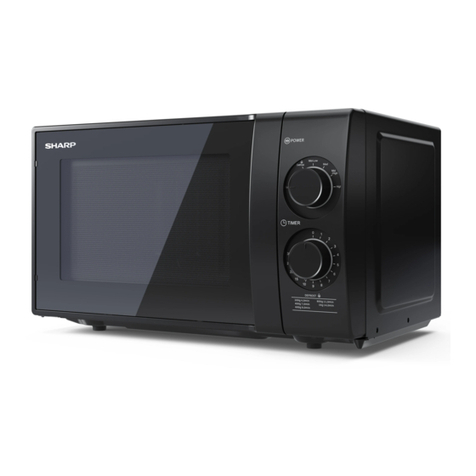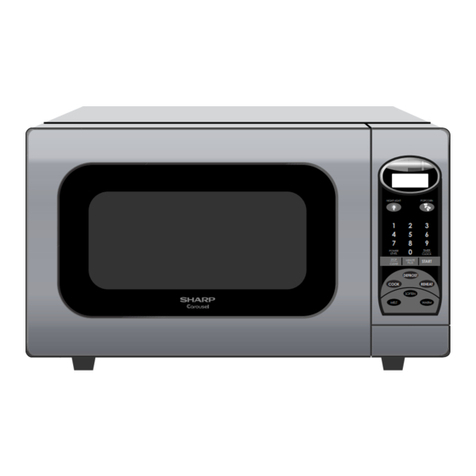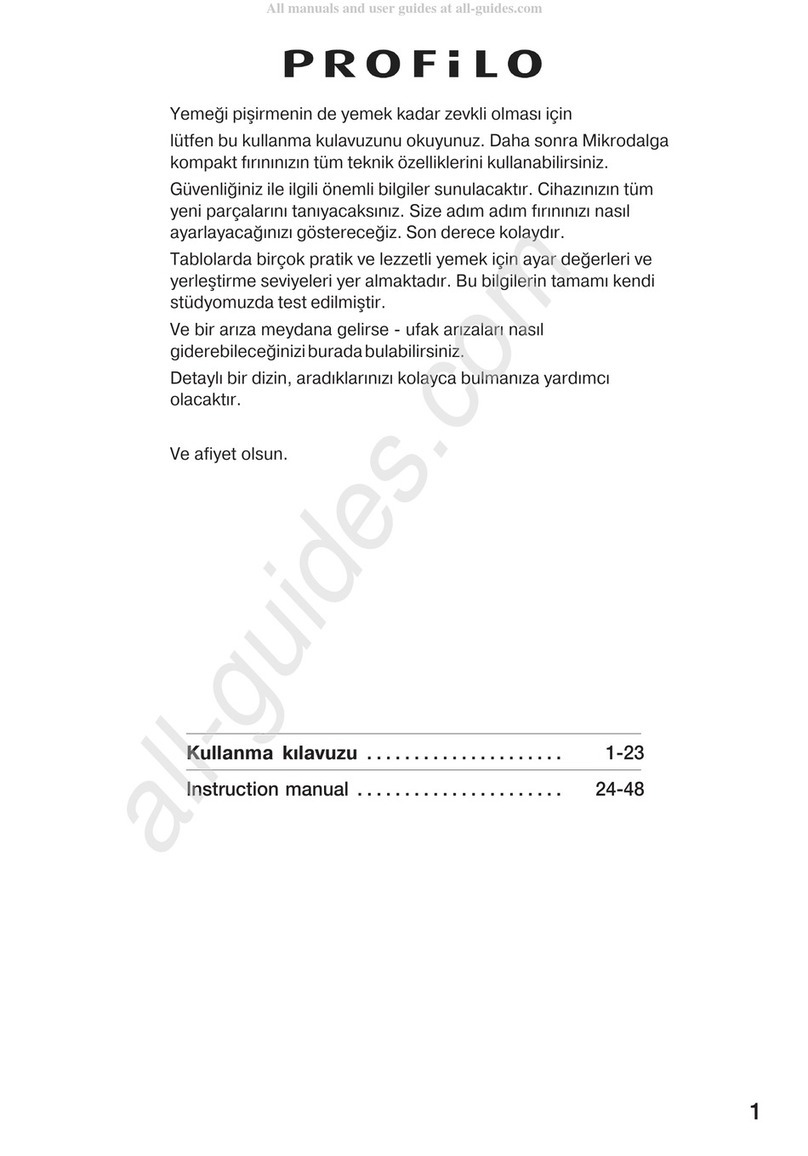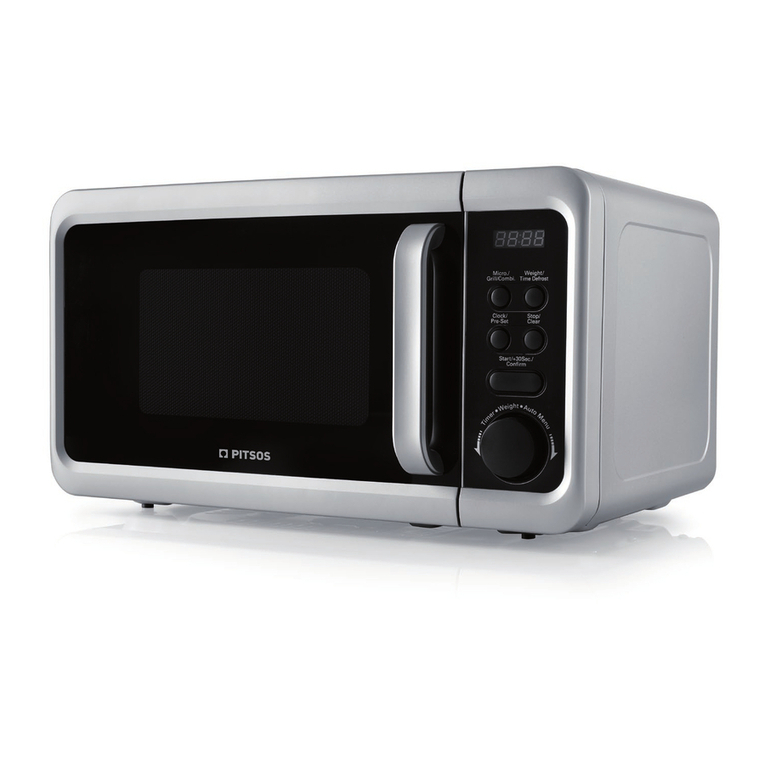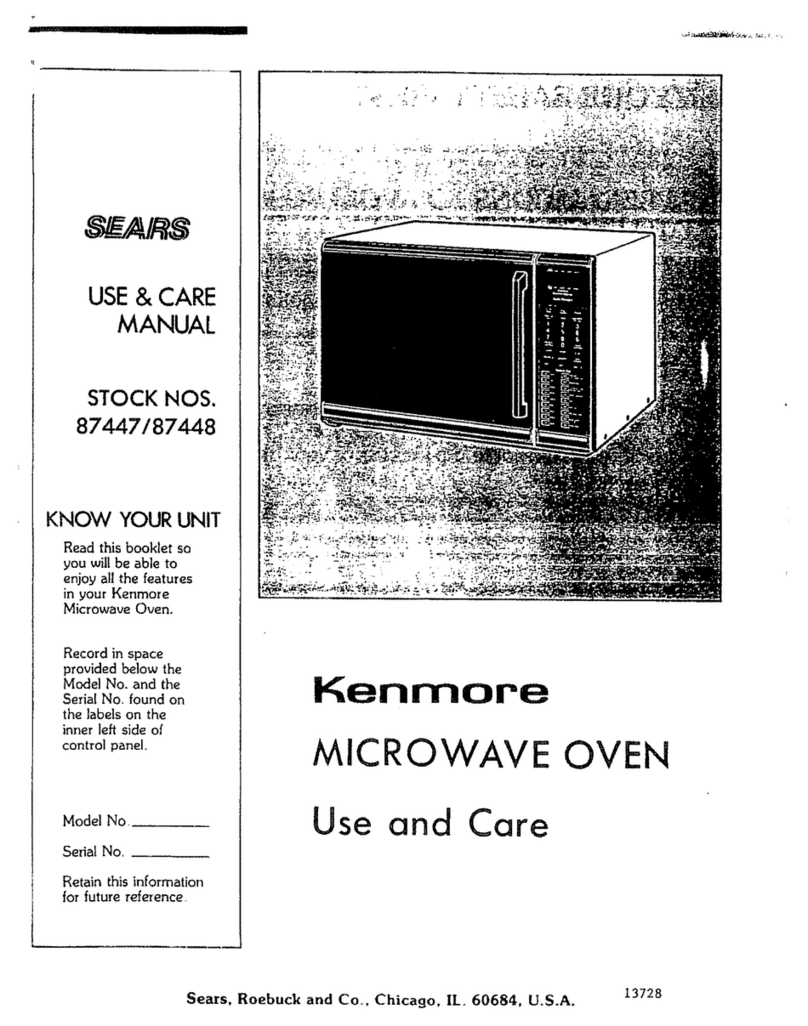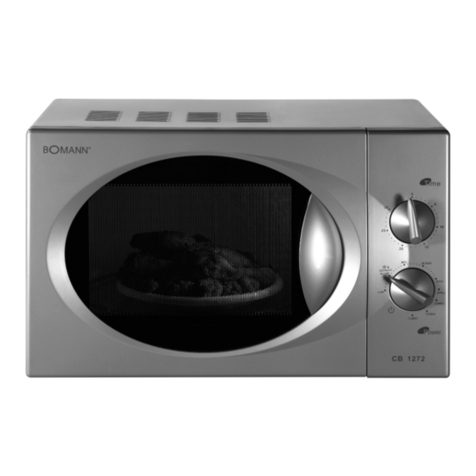OPERATION
OFF CONDITION
Closing the door activates all door interlock switches
(1st. latch switch, 2nd. latch switch and stop switch)
IMPORTANT
When the oven door is closed, the monitor switch contacts
(COM-NC) must be open.
When the microwave oven is plugged in a wall outlet, rated
voltage is supplied to the point A3+A5 in the control unit.
The circuits to the power transformer, fan motor and
turntable motor are cut off when the 1st. latch switch,
2nd. latch switch, and stop switch are made open. The
oven lamp remains on even if the oven door is opened
after the cooking cycle has been interrupted, because
the relay RYl stays closed. Shown in the display is the
remaining time.
Figure O-l on page 27
1. The display flashes “88:88”.
2. To set any programmes or set the clock, you must first
touch the STOP/CLEAR pad.
3. “88:88” appears in the display and the time counts up
every minute.
6. MONITOR SWITCH CIRCUIT
The monitor switch is mechanically controlled by oven
door, and monitors the operation of the 1st and 2nd.
latch switches.
6-1
NOTE:When the oven door is opened, the oven lamp
comes on at this time.
MICROWAVE COOKING CONDITION 6-2.
HIGH COOKING
Enter a desired cooking time with the touching NUMBER
Pad 6-3
and start the oven with touching START pad.
Function sequence
Figure O-2 on page 27
CONNECTED COMPONENTS
Oven lamp. Fan motor, Turntable motor
Power transformer
RELAY
RYl
RY2
MEDIUM HIGH, MEDIUM, MEDIUM LOW, LOW
COOKING
When the microwave oven is preset for variable cooking
power 240 volts AC. power is supplied to the power trans-
former intermittently within a 32-second time base through
the relay contact which is coupled with the current-limiting
relay. The following levels of microwave power are given.
1.
2
3.
4.
5.
Rated voltage. is supplied to the primary winding of the
power transformer. The voltage is converted to about
3.3 volts A.C. output on the filament winding and high
voltage of approximately 2000 volts A.C. on the secon-
dary winding.
The filament winding voltage (3.3 volts) heats the mag-
netron filament and the high voltage (2000 volts) is sent
to the voltage doubling circuit, where it is doubled to
negative voltage of approximately 4000 volts D.C..
The 2450 MHz microwave energy produced in the
magnetron generates a wave length of 12.24 cm. This
energy is channeled through the waveguide (transport
channel) into the oven cavity, where the food is placed
to be cooked.
When the cooking time is up, a signal tone is heard and
the relays RYl+RY2 go back to their home position.
The circuits to the oven lamp, power transformer, fan
motor and turntable motor are cut off.
When the door is opened during a cook cycle, the
switches come to the following condition
CONDITION
SWITCH DURING
CONTACT DOOR OPEN
1st. latch switches CCXMNG (NO COOKING)
COM-NO Closed Open
2nd. latch switch COM-NO Closed Open
Monitor switch COM-NC Open Closed
Stop switch COM-NO Closed Open
SEQUENCE
When the oven door is opened during or after the
cycle of a cooking program, the 1st. latch switch, 2nd.
latch switch and stop switch must open their contacts
first.
After that the contacts (COM-NC) of the monitor
switch can be closed.
When the oven door is closed, the contacts (COM-
NC) of the monitor switch must be opened. After that
the contacts of the 1st. latch switch, 2nd. latch switch
and stop switch are closed.
When the oven door is opened and the contacts of
thelst. latch switch, 2nd. latch switch remain closed.
The fuse M8A will blow, because the monitor switch
is closed and a short circuit is caused.
SETTING:
32 sec. ON
HIGH
24 sec. ON 8 sec. OFF
MEDIUM HIGH
MEDIUM 18 sec. ON 14 sec. OFF
N-1 Approx. 50% = 450 Watts
12 sec. ON 20 sec. OFF
MEDIUM LOW I] Approx. 30% = 270 Watts
6 sec. ON 26 sec. OFF
LOW m-1 Approx. 10% = 90 Watts
NOTE:The ON/OFF time ratio does not exactly corre-
spond to the percentage of microwave power, be-
cause approx. 2 seconds are needed for heating up
the magnetron filament.
4
